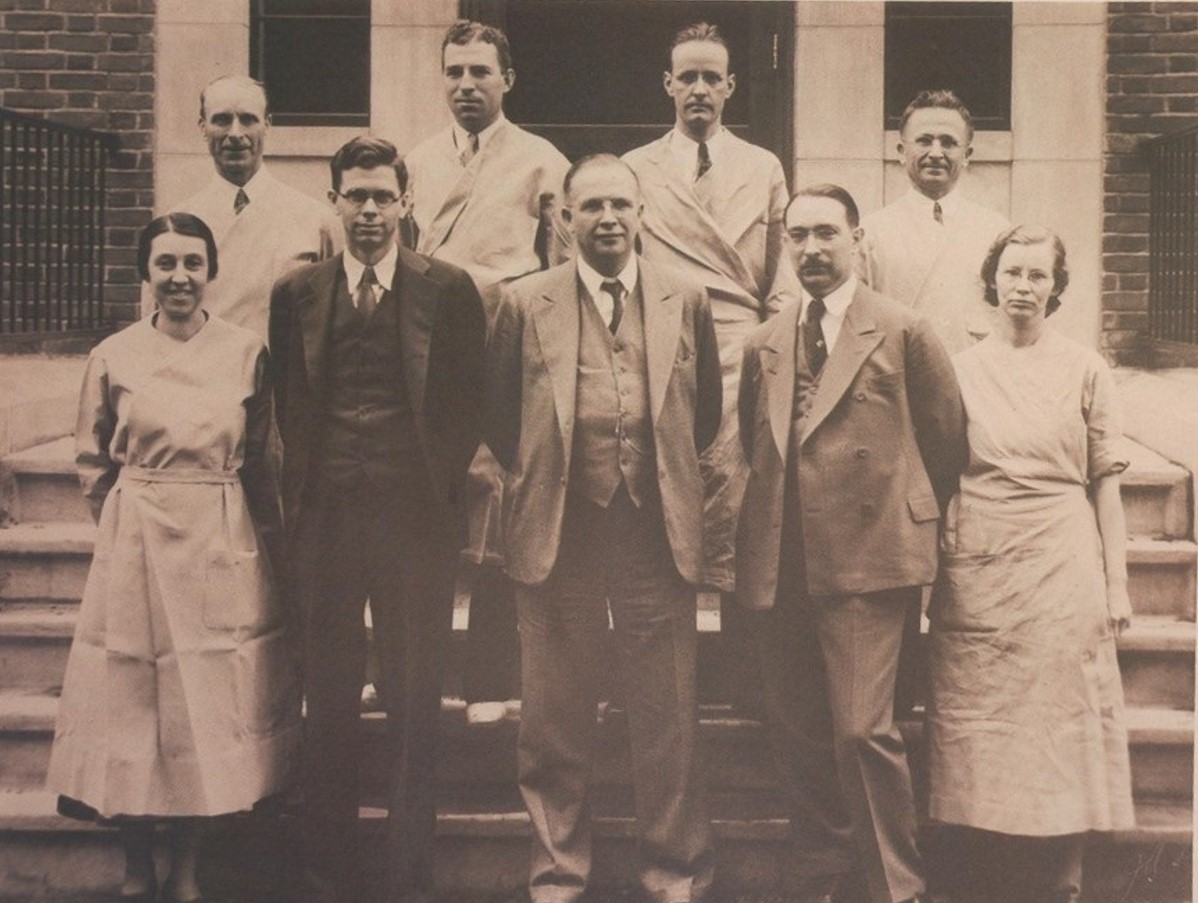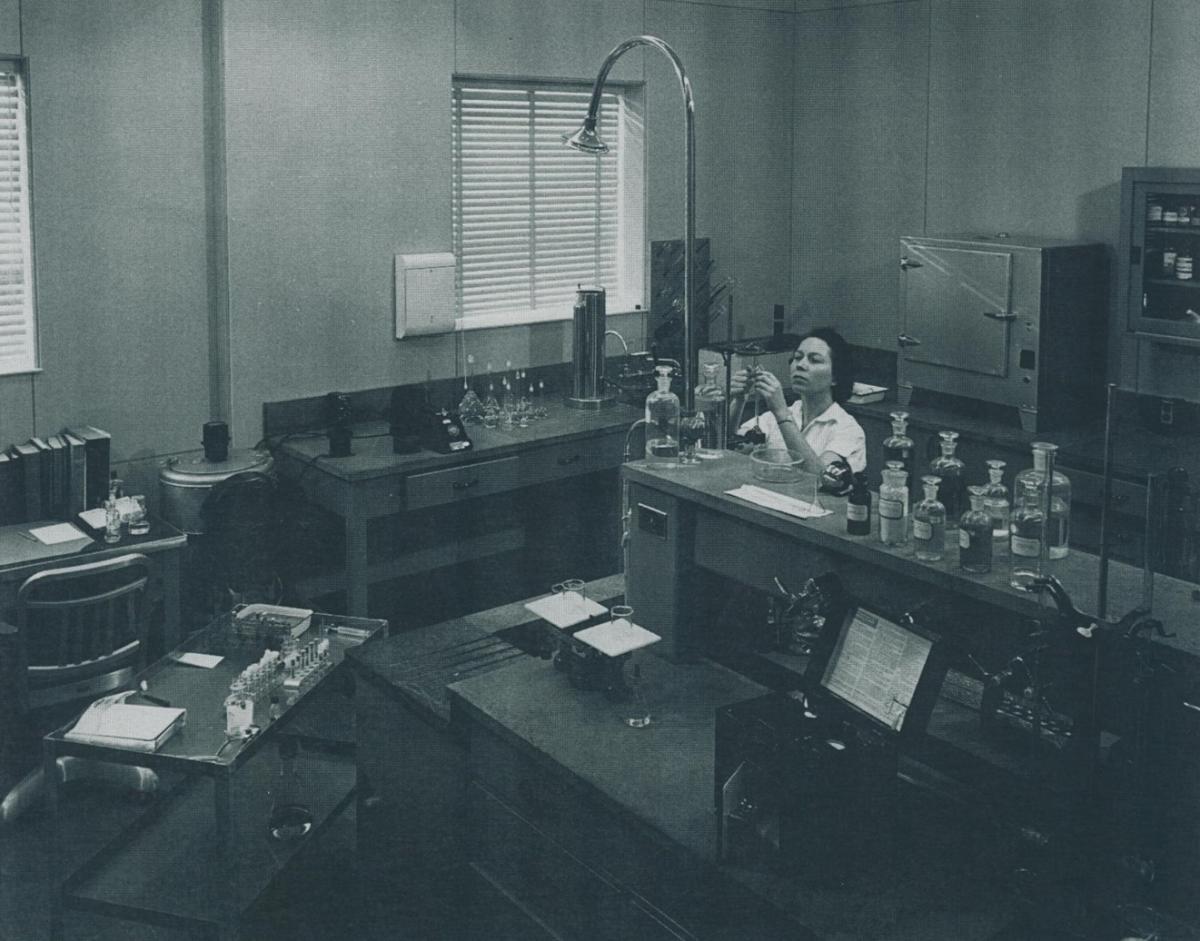William Deichmann faced a challenge. He sat inside a new state-of-the-art laboratory as a recently hired junior pharmacologist. He had a bottle of a new compound in his hand, a compound that became deadly when used in excess. Deichmann’s challenge was to determine the exact point of excess: the “lethal dosage.” Unfortunately for Deichmann, no literature was available to guide his research. This was 1935, and no one in the United States was fully engaged in the study of toxicology.
Deichmann’s laboratory, the Haskell Laboratory for Industrial Toxicology, was among the first of its kind, so he had to start each experiment in a theoretical wilderness. A dozen questions ran through his head, “What tests should I run? What dose should I administer first? How should I administer the dose? What symptoms should I watch for?” Undaunted, Deichmann relished his opportunity to be at the forefront of a new, critical field of study. Every day, he and the eight others that worked at the Haskell Laboratory learned something new. Sometimes they learned something specific about a chemical. Other times they learned to improve one of their methodologies. Most importantly, each day they learned a little more about keeping people safe.

As the United States fully industrialized in the late 19th and early 20th centuries, industrialists sometimes paid little attention to people’s safety. Processes for forging steel might melt someone’s skin, laying railroad tracks might shatter someone’s backbone, and consuming a medicine might kill someone faster than the disease it was designed to cure. However, because of the obvious explosive nature of its singular product – black powder – the DuPont Company had long been conscious of safety. Unfortunately, as the company began to diversify in textiles and chemicals, management found it increasingly difficult to keep people safe. Some employees working with nitro and amino compounds temporarily turned blue – a condition known as cyanosis. Other workers suffered from lead exposure.
Most alarming, in 1929 a growing number working in a Dupont dye plant had been diagnosed with bladder cancer. The company’s medical director, Dr. George H. Gehrmann, M.D., looking for answers traveled as far as Germany where similar bladder cancer cases had been reported. Gehrmann ultimately recommended that DuPont develop a research lab to study processes and products for their potential harm. The company agreed with Gehrmann and financed the creation of the Haskell Laboratory for Industrial Medicine, named for Harry G. Haskell – a longtime company leader and advocate for employee safety.
In existence now for more than 80 years, the Haskell Laboratory for Industrial Toxicology (later renamed the Haskell Laboratory for Toxicology and Industrial Medicine) improved working conditions for people employed in industrial fields and protected the public from deadly toxins. Along the way, the lab established itself as one of the premier toxicology research facilities in the United States and its scientists became influential leaders in the toxicology field. In sum, the Haskell Laboratory is a landmark institution that changed the way companies viewed the processes its employees engaged in and the products it created for consumption.

Select records from the Haskell Laboratory are now available for research at the Hagley Museum and Library. Correspondence and reports from the early 1930’s illustrate that when few others – private or corporate – investigated the safety of industrial products and processes, DuPont and later Haskell laboratory researchers took the initiative to learn how new chemicals and working conditions could affect people’s health and wellness. Papers documenting the lab’s early struggles show that its scientists were indeed pioneers in a research field that was otherwise unknown in the United States.
Despite the lab’s early struggles, clippings from both the popular, trade, and academic presses show widespread enthusiasm for the steps forward that the Haskell Laboratory took during the incubation of the toxicology field. The collection further documents that in the decades that followed, esteemed academic journals published the Haskell Laboratory’s findings, the lab’s scientists were appointed to national advisory boards, and other laboratories sought to replicate Haskell methodologies. Finally, the laboratory’s strategic planning is well documented in the collection for the years between 1990 and 2011. Initially the Haskell laboratory received its funding from the various DuPont departments that requested testing. However, as its parent company became more budget-conscious, the Haskell Laboratory sought to increase revenue streams through work solicited outside of the company.
The collection touches upon several themes and topics, so a variety of researchers may find its contents interesting. First, people interested in the DuPont Company’s entry into the chemical and textile industries will find the collection useful. The Haskell Laboratory was created in response to some of Dupont's early difficulties in these fields. Beyond DuPont specific research, people investigating the beginnings and history of the toxicology field will find the collection pertinent since the Haskell Laboratory was influential in the establishment and direction of toxicology studies in the United States.
More broadly, the collection may be useful to those interested in corporate social responsibility. Haskell research often went beyond DuPont’s immediate interests, and Haskell scientists published their findings to provide guidance and precautions to the greater society. Finally, those interested in corporate influence on public policy may find the collection of interest. While the collection is not brimming with specific instances of Haskell influence on government policy, the collection includes employee information that illustrates how Haskell scientists participated on national committees, gave public addresses to influential decision makers, and served in consultancy roles for key toxicology groups.
A finding aid for the collection can be found here.
Michael DiCamillo is a Processing Archivist in the Manuscript & Archives Department at Hagley Museum and Library.
